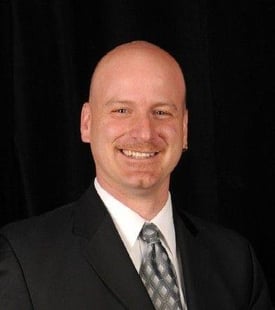The COVID-19 pandemic has brought new attention to the safety of patients during surgery. But long before the concerns brought on by coronavirus, the CU Department of Surgery was working to make patient safety a priority.
Ethan Cumbler, MD, is director of quality for the Department of Surgery, as well as a founding member of the Institute of Health Care Quality, Safety and Efficiency at the University of Colorado School of Medicine and chair of the patient safety committee at UCHealth University of Colorado Hospital.
To say Cumbler spends a lot of his time thinking about patient safety is an understatement. Over the past few years he has led efforts in the Department of Surgery to give patients rapid, uncomplicated recoveries after their procedures.
“It’s an incredible challenge. But this concept of enhanced recovery after surgery is increasingly gaining ground nationally,” he says.
Three roads to success
Ethan Cumbler, MD
Cumbler explains the Department of Surgery has three strategic pillars when it comes to continuous improvement in quality and safety: using data to improve processes and outcomes of care; creating cross-cutting initiatives that reduce surgical complications; and creating surgical pathways to define and deliver perfect care to a patient throughout their surgical journey.
“For a patient going to have surgery, we might identify that perfect care is reviewing all of your medicines and making sure that you’ve stopped the ones you should stop and continue the ones you should continue,” he says. “That you don’t eat too soon before your anesthesia, but that you also don’t come into the hospital dehydrated. That we give you a medicine to prevent blood clots before you even go under the scalpel, and that antibiotics to prevent infection are flowing though your veins in exactly the right window to decrease the chance of infection.
“Every one of those steps needs to happen like solving a sudoku puzzle,” Cumbler says. “If you have a process that has one step, and you’re 99% successful at doing that step, then 99% of the time you get it right. But if you have a process with a hundred steps, and each one of those you get right 99% of the time, most of the time the patient doesn’t get perfect care. Our question is, how do we take extraordinarily complex surgical conditions and get all of the multitude of steps that need to happen perfectly for that person to have the best possible outcome to happen every time?”
Cumbler is working with colleagues across the department on the issue, helping, for example, to decrease pulmonary embolisms and deep vein thrombosis; detect and treat sepsis more quickly; and even streamlining the intake processes so new patients can meet with their surgeons more quickly.
“Challenges with new patient access are common to any academic medical center and ultimately are a good problem to have,” he says. “This is the problem that’s created by our success. You have the reputation — the happy patients who are talking about us to their friends and family, the referral network from colleagues who respect us — that results in more patients wanting to come in than we can accommodate in the first two weeks after they’d like to be seen. Trying to improve this is a priority for the department and the hospital.”
Addressing the blood-clot problem
Cumbler is especially proud of the crosscutting initiatives that have resulted in improvements in patient outcomes. One of the most successful was an effort to reduce blood clots that can form in the legs after surgery and in some cases can travel to the lungs, causing serious complications. Cumbler pulled together a team, including surgical faculty — led by Jon Vogel, MD, and Christopher Raeburn, MD, from the Department of Surgery — pharmacists, blood specialists, anesthesiologists, residents and more to tackle the problem. Among their findings was that many patients were declining a blood-clot-reducing medicine that typically is given in the hospital prior to surgery.
“We started interviewing patients who had just had surgery and asking them about these shots they were getting to prevent blood clots,” he says. “The way that medicine is delivered is a shot in the skin of the belly. We discovered that they weren’t thrilled about the shot, but also discovered they didn’t really understand the ‘why’ behind the shot. So we designed an intervention to increase patients’ willingness to get the treatment to increase the chance they would have an uncomplicated recovery.”
That intervention included educating nurses on ways to administer the shot less painfully and creating new escalation pathways so patients were given multiple opportunities to learn about the medication from their surgical team. Pharmacists were brought in to recommend alternative options if patients simply could not tolerate the injection.
“The combination of all of these things, when we rolled it out across the hospital, was really interesting,” he says. “Nurses reported increased comfort in giving the shots in a way that wouldn’t hurt and patients would find acceptable, and there was a greater team approach to helping the patient understand the why behind the shot. Across the hospital, patients declining this treatment was reduced by 47%.”
The end result of this initiative to reduce blood clots after surgery is that 25 extra patients each year are leaving the University of Colorado Hospital without that surgical complication, he says. It’s just one example of how the department is working to define perfect care so that every patient has the best of chance of a textbook recovery.
“We have very successful enhanced-recovery-after-surgery programs with a number of surgical conditions, such as colorectal surgery, hip, knee and breast,” he says. “The next step is for us to go through that extraordinarily challenging process of defining perfect care for more operations. Coming to an agreement across our health system as to what it should be, then building our systems to support that care and monitoring and providing data-driven feedback so that we can know where we are doing well and what we need to improve.”



.png)

